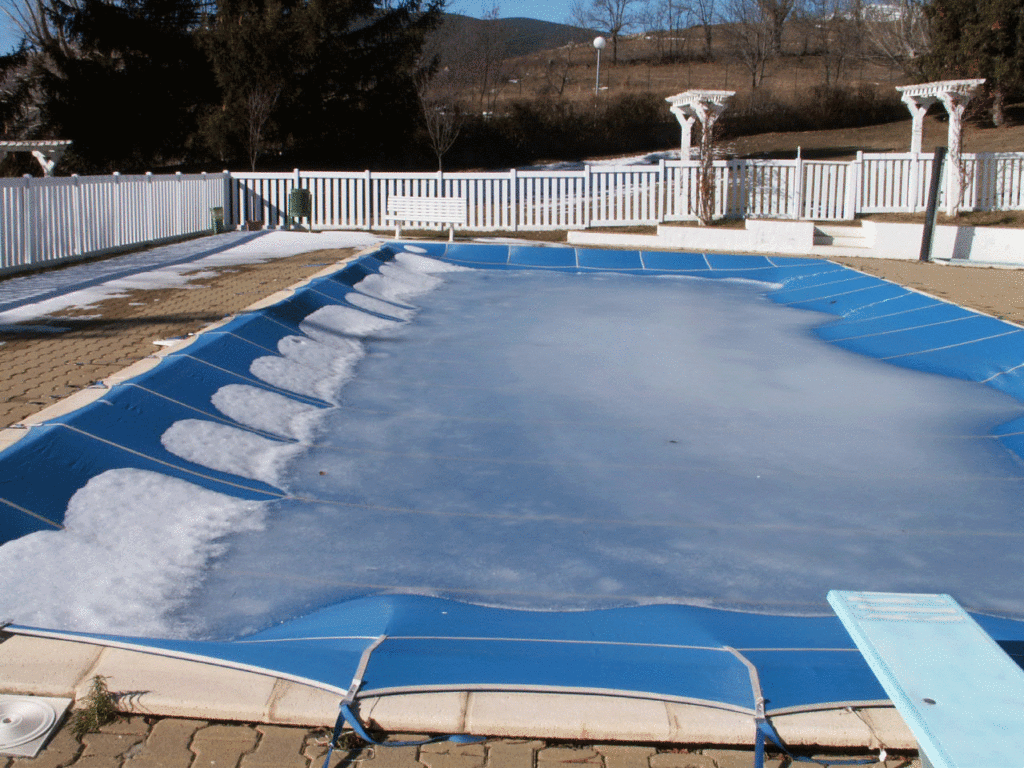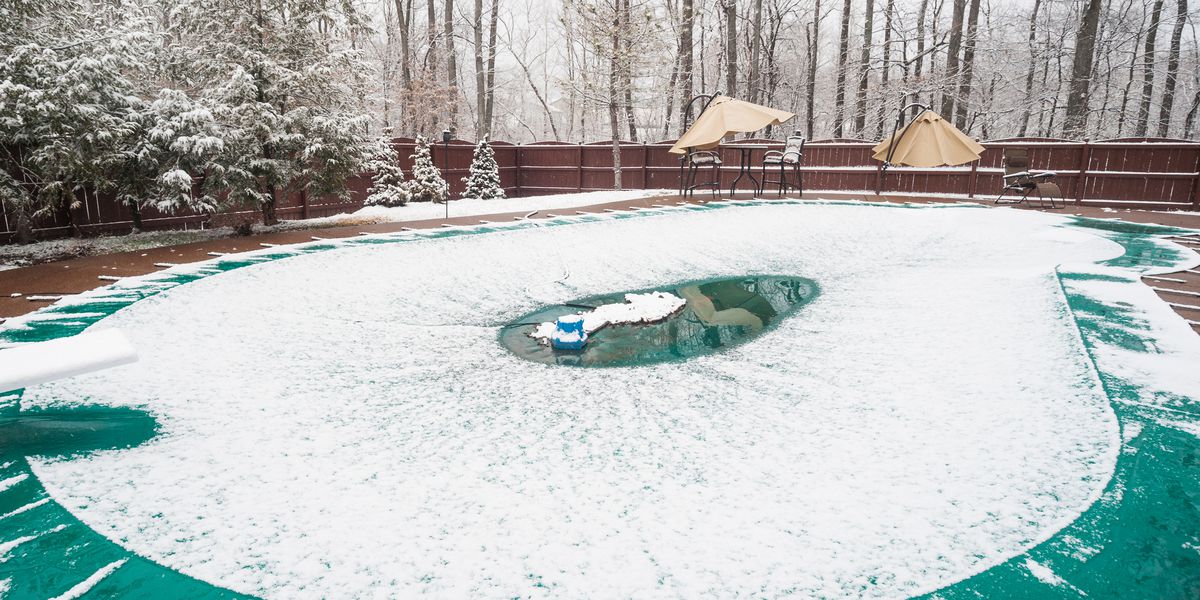PRIVATE POOLS OWNERS SHOULD ALWAYS PRESERVATE THE POOL WITH THE COMING OF COLD.
So that the pool bowl is not damaged during temperature changes in winter, and the equipment continues to work without problems next year, it is necessary to prepare the pool for the winter season, just these preparatory work is called conservation or wintering of the pool.
Pool maintenance can start when the air temperature reaches 15°C. This process does not tolerate haste and is carried out in stages, so you need to start work in advance in order to have time to do everything before the first frost.

So that during frosts groundwater and soil do not squeeze the bowl, a certain amount of water must be left in the outdoor pool. The water in the pool bowl performs a protective function – it compensates for the external load on the bowl, protecting it from cracks and destruction. A few days before the conservation of the pool, it is necessary to correct the pH level in the range of 7.2 – 7.4. Skimmer baskets, handrails, spotlights, ladders, slides and other removable equipment should be removed from the pool. After that, with the help of water vacuum cleaners, you need to clean the bowl. Surface contamination in the form of insects, branches, leaves can be removed with a hand net. In addition, it is necessary to thoroughly rinse the sand filter and shrink the sand.
Using a vacuum cleaner, lower the water level 10 cm below the nozzles and skimmer holes. If Roman stairs are provided in the design of the pool, then the water level must be brought to the level of the second step.
All pumps: counterflow pump, circulation pump, heat exchanger pump must be removed and stored in a dry and heated room. Residual water in all pipes is removed using a compressor or a pool vacuum cleaner. Pipe valves in the technological shaft are left open. The end of each pipe must be wrapped with a strong plastic bag, leaving a small amount of air. If there is an automatic chemical dosing station, all substances must be drained from it and also prepared for wintering.
The required amount of winter chemicals is added to the bowl by hand. To prevent the destruction of the bowl from the expansion of water at low temperatures, ice compensators are lowered into the water that remains in the pool. After all the stages of wintering have been completed, it is necessary to install a pool cover (awning or pavilion) to avoid rain and debris from getting into the bowl, keeping it clean until the next season.
If you have completed each stage of conservation correctly, you can be sure that your pool will withstand any climatic conditions of the coming winter.
RECONSERVATION OF THE POOL (WINTERING OF THE POOL) AFTER WINTER
If your pool is located outdoors, it must be protected from frost by conservation. Conservation (wintering) of the pool for the winter implies a number of mandatory actions that help the structure to safely “survive” the winter.
At the end of the cold weather, the pool is prepared for the new season and wintering is carried out.
With the onset of heat, when the average daily temperature outside rises to + 5- + 10 ° C, it is necessary to prepare the pool for commissioning.
Preparations for the launch should not be started until the ice has melted naturally and the night frosts have ended, but you should not delay the process either, as the water may begin to “bloom” and deteriorate.
The reopening of the pool after the winter begins well in advance in order to be in time for the beginning of the swimming season. To conduct a spring launch of the pool, you must perform several actions:
- Clean the surface of the water and the surface of the bowl mechanically
- Connect the equipment and check its serviceability
- Carry out chemical treatment of water
First, remove the pressure compensators and plugs that have been in the pool all winter. They need to be dried and packed before the onset of next autumn. Mechanical cleaning of the water surface involves getting rid of all sorts of contaminants that somehow got into the water during the winter period. A pool net will help catch leaves, branches, insects and other possible motes. The water from the pool must be drained, starting to clean the surface of the bowl from the formed plaque. This should be done using soft sponges and brushes, using a pool vacuum cleaner can make the task easier. Particular attention should be paid not only to cleaning the bottom and walls of the bowl, but also its embedded elements: skimmer, nozzles, counterflow (if any).
For the winter, some equipment is dismantled to prevent its breakdown, and some is prepared for wintering. To protect the parts from freezing and moisture ingress, the water in the pool descends to a predetermined level, and the parts themselves are dried and closed. With the onset of spring, all equipment needs to be connected and configured. It is imperative to check the reliability of connections and seals by blowing compressed air through the pipelines.
Before starting the filtration, the level of sand in the installation should be checked. Filtration is switched on after filling the pool with water to the working level. For skimmer pools – up to the level of the skimmer, for overflow pools – up to the level of the overflow grilles. The filtration unit starts up in the “Flushing” valve mode for 5-10 minutes.

The addition of chemistry for the pool is performed simultaneously with the start-up of the equipment. Chemical water treatment begins with shock treatment. Disinfectants containing chlorine effectively eliminate harmful microorganisms. To purify water from precipitation, a flocculant is used that binds all small residues into flakes suitable for filtration.
The filtration launched earlier will eliminate the turbidity of the water, after which its chemical parameters, especially acidity, can be checked. After primary water treatment, it is necessary to normalize the pH level. To begin with, it is determined using a tester and, if necessary, pH + or pH- means are used, depending on the measurement result. To eliminate algae, an algaecide is added to the water.
The entire volume of water in the pool must pass through the filtration several times in order for the water to meet sanitary standards. This process will take a day or two. After that, you need to re-analyze the water to make sure that it has the optimal content of chlorine, salts, oxygen, and also check the pH level. If the pool is equipped with water heating equipment, the swimming season can begin immediately, being sure of safe recreational conditions. After all these activities, the pool is ready for full use until the next wintering.
